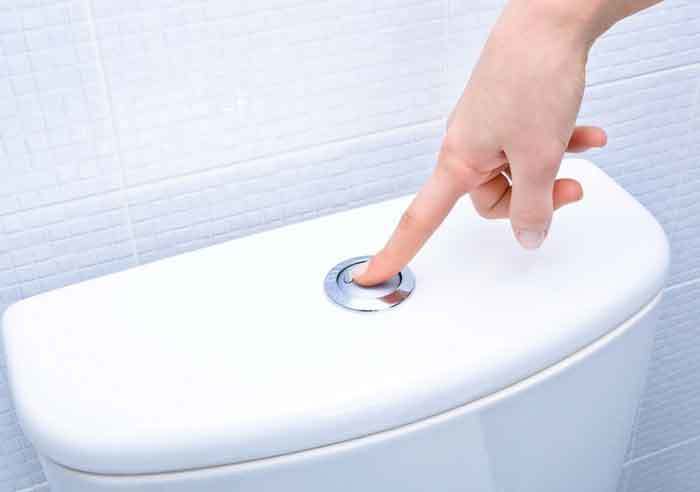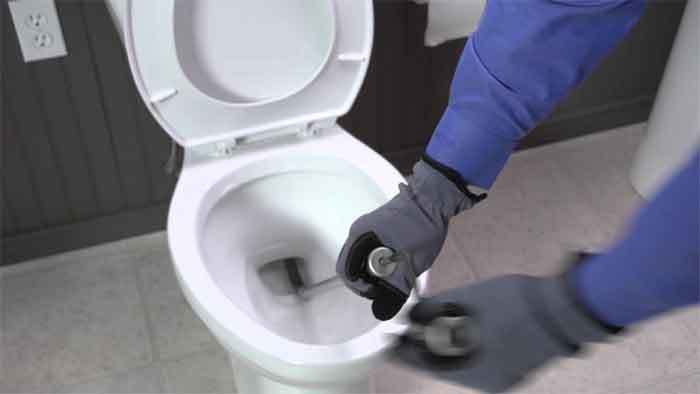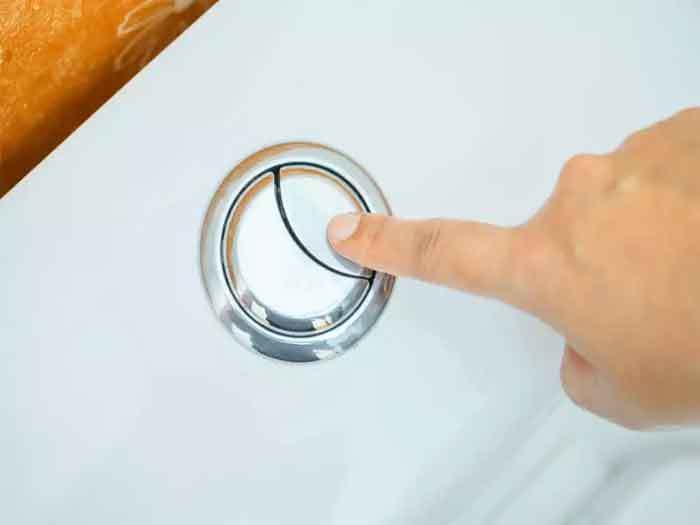Disclaimer: This post may contain affiliate links, meaning we get a small commission if you make a purchase through our links, at no cost to you. For more information, please visit our Disclaimer Page.
When using a toilet, you want to feel comfortable and relax in the convenience of your toilet environment.
We often take toilets for granted, using them regularly every day makes us forget how much easier it is for us to conduct our everyday routines.
Nevertheless, in case of malfunction or occurrence of plumbing issue, we realize how important it is to have your toilet regularly working.
One of the things that could go wrong is the blockage or failure to flush the contents at once.
If your toilet does not flush all the way and require multiple flushes to empty the toilet, you can remain calm and rely on several different methods of solving the issue.

What Complications can Partially Flushing Cause?
In case your toilet starts to flush partially, not only will you spend more water for removing the waste, but also find yourself in a struggle to maintain the hygienic atmosphere in your toilet.
If your toilet becomes unable to fully flush, you will probably have to use at least 3 or 4 partial flushes to empty the toilet bowl.
This can make your water bills grow since you will waste much more water than what you would normally need.
On the other hand, you will have to wait each time after a flush to be able to use it again and again until you are satisfied with the result.
Of course, there is one more thing which could automatically makes you want to fix this issue, and that is the waste being leftover each time after you flush because the flush is too small, and with small pressure, it is difficult to remove the waste with just flushing over and over.
Because of all these reasons, it is important to spot this issue at the start and deal with it quickly and effectively.
Related: How much Water Does it Take to Flush a Toilet?
Possible Reasons for Toilet Not Flushing All the Way
Many things can cause the toilet not to flush with its full strength.
To figure out what exactly triggered this issue, make sure you know all about the parts of the toilet that might have malfunctioned, and caused this problem to you.
In most cases, one of these reasons might be why your toilet doesn’t flush correctly:
A clog or a partial clog occurred in your water lines
First thing you should check if your flush does not have sufficient strength is the possibility that a clog occurred.
Sometimes a partial clog is much worse than a regular one since a partial clog blocks only a part of the water supply line. This way, water is still able to move through the pipe, while losing much pressure when passing the partial clog.
This can lead to a very weak flush, having in mind that the pressure needed for a full flush was used to pass the clog.
You can check this possibility quite easily, just pour a gallon of extra water when flushing the toilet.
This way, in case a toilet still doesn’t flush correctly, you will know for sure that you have a clog.

Check your toilet tank’s water level
Another possibility is that the water filling in your tank did not reach its marked level.
The water pump fills the tank with toilet water and the float goes up to the designated point.
The float is supposed to determine the needed amount of water for a flush, so if the pump stops filling the tank with water before the float has reached its required level, the flush will not be powerful enough to wash out the content of the bowl.
Check if the flapper got damaged
The flapper is one of the most important components of your toilet system.
This part has a significant role in toilet flushing since it is responsible for letting the water flush to the bowl, and for closing the outlet which lets the water fill the tank. When it reaches the desired level, the flapper closes the outlet, therefore, preventing the water from entering the tank.
The flapper is very sensitive, it can easily bend over or even get ruptured, so it can be prevented from doing its purpose and that may be the reason why your toilet does not flush all the way.

A loosen chain in your toilet
If the chain connecting the flapper with the flush handle got loose, it might prevent the handle from flushing the water.
This bond between the components in the tank and the handle outside it is a crucial part of the flushing system, and without it being able to operate, the flapper would not be able to raise and trigger the flush.
There is also the possibility of torsion of the chain throughout the tank, so the best way of checking if the chain is fully operational is to remove the lid of the tank and see the situation.
The rim jet holes got clogged
In case you are not informed on this subject, the jet holes are located under the rim where the water is entering your toilet bowl.
Although these openings are not that easy to spot and locate, do your best to check them for clogs, and thoroughly clean them if necessary.
These holes are often the target of many bacteria, so you should not be surprised if this was the cause of your toilet being unable to fully flush.
Mineral and bacterial buildup in the toilet blocks the water when flushing
It is not unusual that we pay less than enough attention to our toilets.
In some cases, bacteria or mineral deposits can accumulate and partially create a blockage in the pipes.
If you are not using chemicals for specific mineral buildup or cleaning the toilet with other household products, there is a high chance that you will have to remove mineral deposits to get the full flush.
Steps to Take to Improve your Flush
It’s one thing to spot the source of the problem, but the more complicated part comes after the recognition, and that is to find a solution and fix the issue.
There are quite a few things you can do about this problem on your own, without any professional help.

But first, you have to be sure you know what is causing the flush to be poor, to know which measures to take when fixing it.
- If the problem is including one or more tank components such as flapper, float or a flapper chain, the best solution would be to lift the lid and fix the problem yourself.
Floats and flappers are affordable components that can easily malfunction, so in case of spotting the core of the problem, replace that part with an accordingly one.
Be sure to return everything in its place, if the flapper was the cause take extra precaution when handling the chain to prevent additional issues.
- If you have established that mineral buildup is causing you trouble, use specified chemical agents just for mineral deposit and bacteria removal.
These means are not that much expensive either, while it should help you to break down the blockage in your water lines.
Depending on the time passed from the last conducted chemical cleaning, you might also be able to use vinegar and baking soda to remove the deposit.
- In case of clogging in your toilet, either you will be able to break the clog yourself, or you will be forced to call the professional help.
Since you probably already own plumber’s snake or toilet auger, apply those means to get rid of the clog.
- In case of a constantly low water level, you can solve the issue by attaching the new fill valve.
You will have to find the according valve for your toilet specifically, and install it correctly by removing and returning the water supply hose.
During this process, it is very important to shut down the water supply to your toilet first, to prevent possible additional malfunctions.
Conclusion: Toilet Doesn't Flush All the Way
Not being able to fully flush can be surprisingly tiresome and bothering experience.
Luckily, in most cases, this problem does not involve expensive repairs and solutions, but other complications that it may cause can be frustrating enough by itself.
The biggest mistake you can make is not being able to make a difference between the full clog and a partial one since if you have a clog in your main drain line, you will, unfortunately, have to rely on the help of professional plumber.
To prevent further complications with the water supply lines, it is recommended to tend to this issue in the moment of its occurrence, and follow the instructions regarding the recognition of a problem, as well as solving the core of it.
You might also like: How to Unblock a Slow Draining Toilet?
